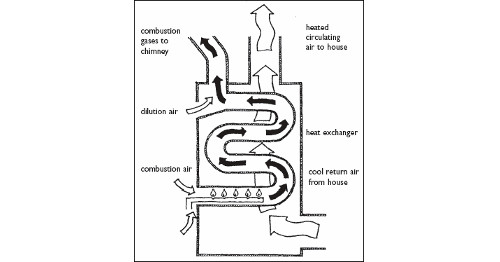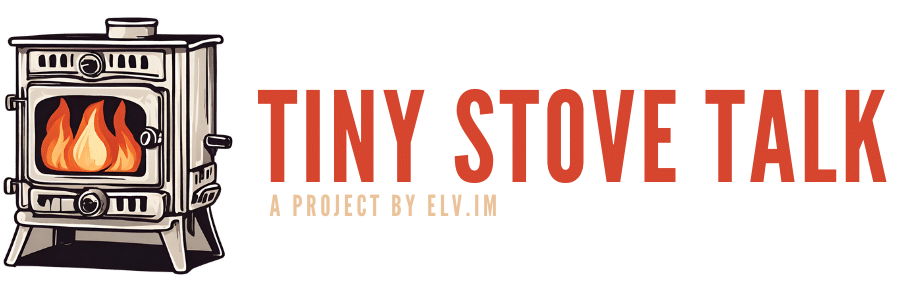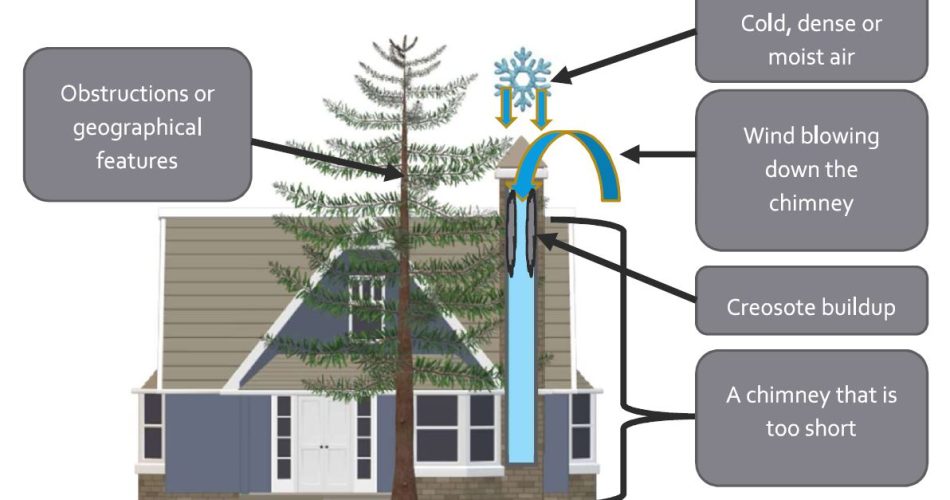Solving Chimney Draft Problems – Effective Solutions and Preventative Measures
Ever found yourself wondering why your room’s filled with smoke even though you’ve got a chimney? You’re not alone. It’s a common issue often linked to chimney draft problems.
Understanding the mechanics of a well-functioning chimney is essential to maintaining a safe and comfortable home. Let’s explore what these draft problems are, why they occur, and how you can troubleshoot them.
Stay tuned as we delve into the often overlooked but vital topic of chimney draft problems, equipping you with the knowledge to keep your home smoke-free and your fireplace burning bright.
Basics of Chimney Draft Mechanics

Understanding the mechanics of chimney draft proves integral in combating those troublesome chimney draft problems. The operation of chimneys hinges on the scientific principle of hot air rising. A functioning chimney contains air that is less dense, and warmer, in comparison to the cold outdoor air. This difference in densities induces upward movement of the warm internal air, creating a vacuum or “draft.”
To maintain an efficient chimney draft, both the size of the chimney flue and the temperature differential factor are significant. Larger chimneys, for instance those with a diameter of 12 inches, facilitate better drafts compared to smaller chimneys, say, with diameters of 8 inches or less. The reason is that larger spaces accommodate a greater volume of rising warm air, boosting the upward draft.
Temperature psychology also impacts the chimney draft. The bigger the temperature difference between the indoors and outdoors, the better the draft. For instance, on a chilly winter night with an outdoor temperature of 0°F and an indoor temperature of 70°F, chimneys tend to operate maximally.
However, these mechanics also explain why chimney draft problems occur and how to stop chimney drafts. Cold downdrafts could happen if outdoor temperature invades the chimney, cooling down the warm air inside. This results in smoke spilling into the house instead of heading up the chimney. Alternatively, architectural issues, such as poorly designed chimney flues, tend to disrupt a smooth draft.
Concerning how to increase the chimney draft, I maintain a few robust solutions. Proper chimney maintenance by cleaning and removing any blockages ranks atop the list. Additionally, using dry, seasoned wood for fireplaces enhances the indoor temperature, which subsequently increases the draft. Lastly, retrofitting existing fireplaces with a top-sealing damper or chimney exhaust fan helps boost the chimney’s overall performance.
Common Causes of Draft Issues
Different factors contribute to chimney draft problems, making knowing these problematic elements crucial in alleviating and preventing this inconvenience.
1. Improper Chimney Size.
When it comes to chimneys, size matters. Strive for a balance in the size disparity between the chimney and the furnace. An oversized chimney can quickly lose heat resulting in inefficient draft, whereas a tiny one restricts the necessary space that smoke requires to flow freely.
2. Cold Chimney Syndrome.
A chilly chimney complicates the establishment of a strong draft. This sequence hampers the chimney’s capacity to expel smoke effectively, resulting in cold downdrafts.
3. Poor Chimney Design.
Ill-planned blueprints pose problems for chimney performance. Common issues include short stacks that lack the necessary height to establish an optimal draft or ludicrous bends and turns that obstruct smoke flow.
4. Obstructions Inside the Chimney.
Direct obstructions, such as bird nests or accumulated creosote, impede the chimney draft, creating problems with the smoke discharge.
5. Inadequate Home Ventilation.
A tightly insulated home can cause draft problems. If the house lacks enough air supply places to support the draft, the chimney struggles to establish an effective draw of air, hampering the smoke’s expulsion.
6. Wet or Green Wood.
Using wet or freshly cut “green” wood leads to a smoky fire, thus polluting the air and depositing creosote on the chimney walls. This situation hampers the chimney draft and increases the risk of chimney fires.
In recognizing how to stop chimney drafts, knowledge of these common causes serves as the first step in preventing and addressing the draft problems. Subsequent sections will delve into steps that I can take to increase the chimney draft and maximize your fireplace’s efficiency. Mapping out potential draft issues and their remedies ultimately equates to a safer, warmer home environment.
Identifying Draft Problems

Measuring the effectiveness of chimney draft becomes easier when one is familiar with the common signs of potential draft problems. As a starting point, observe your fireplace while it is in use. Irregular smoke patterns, difficulty in starting a fire, or fires that quickly extinguish themselves often point towards issues with the chimney’s draft mechanism.
Check for increased smoke presence inside your home.
If there’s smoke inside the house, it’s a clear sign of draft problems. Excessive smoke signals that something hinders the upward flow of smoke, gases, and toxins. The reason could be a blockage in the chimney or, possibly, a flaw in the chimney’s design or construction.
In the absence of fire, try the tissue test.
Hold a tissue up to the fireplace opening, if the tissue gets pulled towards the fireplace then cold air is pushing down the chimney. Cold air drafts, often referred to as “cold chimney syndrome”, indicate issues in the existing chimney draft.
Pay close attention to persistent issues such as a drafty room or condensation build-up. These situations often arise from issues beyond the fireplace, such as inadequate home ventilation. Properly ventilating the home improves the air pressure balance and consequently enhances the chimney’s effectiveness.
Lastly, examine the type of wood you are burning.
Burning wet or green wood generates lots of smoke, contributing to a chimney draft problem. As a rule, stick to seasoned dry wood to increase the efficiency of your chimney draft.
Use these observations to identify your specific chimney draft problems and move towards rectifying them. The measures discussed in the next sections will guide you on how to stop chimney drafts and increase chimney draft for optimal fireplace functionality.
After this, the next section will delve deeper into specific remedies and preventative measures to fortify your chimney’s draft mechanism, future-proof your home heating system, and increase your overall house warming efficiency.
Solutions for Improving Chimney Draft
To address the root of chimney draft problems, the following measures prove effective.
Install a Chimney Cap
The first solution I propose involves the installation of a chimney cap. A chimney cap serves to block downdrafts, aiding in protection against moisture and animals. Remarkably, despite its defensive nature, a chimney cap still allows updrafts, thereby assisting in enhancing the chimney draft.
Use a Chimney Fan
The second solution points to the use of a chimney fan. The role of a chimney fan stands crucial during windless days. As there is no wind, a chimney fan facilitates draft movement in the absence of the natural updraft. Not only does this fan support in preventing cold downdrafts, but it also plays a monumental role in increasing your chimney draft.
Extend the Chimney
My third solution suggests the extension of the chimney. A taller fireplace stack often results in a better draft, thanks to the increased pressure differential. This extension directly deals with architectural flaws that could be contributing to the problem, paving the way for an overall improvement in internal airflow.
Insulate Chimney Flue
Fourth on the list is the insulation of the chimney flue. As temperature differentials significantly impact chimney draft, by insulating the flue, you ensure it stays warmer than the outside air. Therefore, insulating the chimney flue can help stop chimney drafts from occurring and enhance efficiency.
Use Dry Wood
Lastly, burning seasoned dry wood remains essential. As stated before, the usage of such wood optimizes chimney draft efficiency, reducing the chances of abnormal smoke patterns and difficulty in starting a fire.
Follow these measures respectively, and you can steadily improve your chimney draft, resolving potential draft issues, and ultimately maintaining a safer, warmer home environment. Remember, these steps are not merely theoretical; their application in real life renders them practical, ensuring their effectiveness. As you employ these solutions, keep in mind achieving optimal chimney draft requires continuous observation, preventive measures, and immediate addressal of any identified issues.
Preventative Measures and Regular Maintenance
Consistent vigilance serves as the front line against chimney draft problems. It starts by recognizing the patterns and knowing what factors to monitor. Regular chimney sweep appointments befit every chimney, both ensuring the longevity of the chimney and eliminating potential hazards. Professionals recommend scheduling these checks annually.
1. Inspecting the Chimney Structure Periodically
Periodical inspections keep the draft efficiency of your chimney at an optimal level. Research shows that unchecked minor issues, such as fissures in the structure or accumulated creosote can quickly escalate into bigger problems, affecting the natural flow of air – the chimney draft.
2. Burning Seasoned Wood Only
Optimal efficiency underlines the essence of burning seasoned, dry wood. Green or freshly cut wood contains high water content, causing it to burn inefficiently and produce excessive smoke. Consequently, the extra smoke can create a thick layer of creosote inside the chimney, hindering the airflow. Seasoned wood, with a moisture content of less than 20%, increases the draft and significantly reduces creosote buildup.
3. Installing a Top-Sealing Damper
A solution for how to stop chimney drafts is a top-sealing damper that closes off the chimney when not in use, preventing cold air from entering your home. An added benefit of such a damper lies in its ability to curb energy loss, effectively reducing your heating bills.
4. Chimney Height Evaluation
As a rule of thumb, the chimney height determines how to increase the chimney draft. If problems persist despite preventive measures, extend the height of your chimney for better-to-best air draw. Remember, an architect or professional is proficient at assessing the right height for your chimney.
5. Insulating the Chimney
Other than improving structural integrity, chimney insulation maintains the warmth of the chimney, boosting draft performance. After all, warmer air is less dense and rises faster than cold air, leading to an improved chimney draft.
6. Cap Installation
An investment in a chimney cap serves as a solution to those pesky chimney draft issues by blocking downdrafts caused by strong winds. The cap carries the additional advantage of keeping rainwater, debris, and small animals out of your chimney.
Armed with preventative measures and regular maintenance, the robust performance of your chimney becomes an attainable feat. In the case of queries or uncertainties, expert advice stands a phone call away to ensure the safety and efficiency of your chimney.
Key Takeaways
- Chimney draft problems are common and typically caused by the size and design of the chimney, obstructions within, inadequate home ventilation, and use of incorrect type of wood.
- Proper understanding of chimney draft mechanics is essential for maintaining optimal functioning. This includes the knowledge that larger chimneys and a larger temperature differential between indoors and outdoors enhance draft.
- Common causes of draft problems include improper chimney size, cold chimney syndrome, poor chimney design, obstructions in the chimney, inadequately ventilated homes, and the use of wet or green wood.
- To diagnose draft problems, look for signs such as irregular smoke patterns, difficulty starting a fire, smoke presence inside the house, cold air drafts, and issues like room draftiness and condensation build-up.
- Remedies for improving chimney draft include installing a chimney cap or fan, extending the chimney, insulating the chimney flue, and using seasoned dry wood in the fireplace.
- Implementing preventive measures and ensuring regular maintenance are essential steps to maintaining a safe and efficient fireplace and chimney. These measures include regular chimney sweeping, periodic structure inspection, using only seasoned wood, installing a top-sealing damper, evaluating chimney height, and insulating the chimney.
When to Call a Professional
We’ve navigated the ins and outs of chimney draft problems and solutions. But let’s not forget, it’s not always a DIY job. When irregular smoke patterns persist, or if you’re struggling to start a fire despite all efforts, it’s time to call in the pros. Cold chimney syndrome and drafty rooms that don’t improve with preventive measures need expert attention too. Remember, a well-maintained chimney is not just about warmth, it’s about safety. So, don’t hesitate to seek professional help when condensation builds up or when your chimney’s height or insulation needs reassessment. After all, the goal is a safer, warmer home. And sometimes, achieving that means letting the experts do what they do best.
What is chimney draft and what factors affect it?
Chimney draft refers to the flow of air in your chimney that ensures smoke is expelled properly from your home. Major factors that influence chimney draft include the size of the chimney, temperature differentials or how hot the fire is, and the outdoor temperature.
What are the signs of draft problems in a chimney?
Signs of potential chimney draft issues include irregular smoke patterns, difficulty in starting a fire, excessive smoke inside the house, what’s known as cold chimney syndrome, drafty rooms, and a buildup of condensation.
How can I improve my chimney’s draft?
Improving your chimney’s draft can be achieved by installing a chimney cap to block downdrafts, utilizing a chimney fan for better air flow on windless days, extending the chimney’s height, insulating the chimney flue to maintain warmth, and using seasoned, dry wood.
What are some recommended preventative measures for maintaining chimney draft?
Preventative measures include regular chimney sweeps and structural inspections, installing a top-sealing damper, using only seasoned wood for burning, examining your chimney height for potential adjustments, insulating your chimney, and implementing a chimney cap to prevent downdrafts.
What’s the purpose of using seasoned, dry wood in maintaining chimney draft?
Burning seasoned, dry wood allows for a hotter, more efficient fire. This increased heat produces a stronger draft, in turn drawing more air into your chimney and promoting more effective ventilation of smoke.



Comments